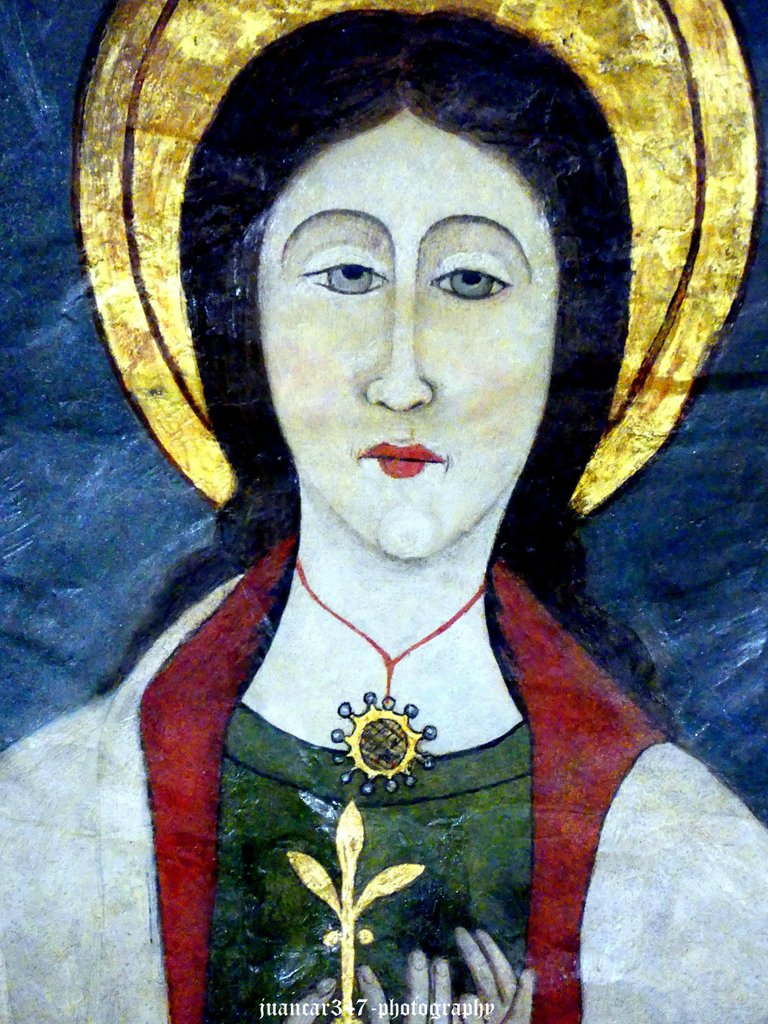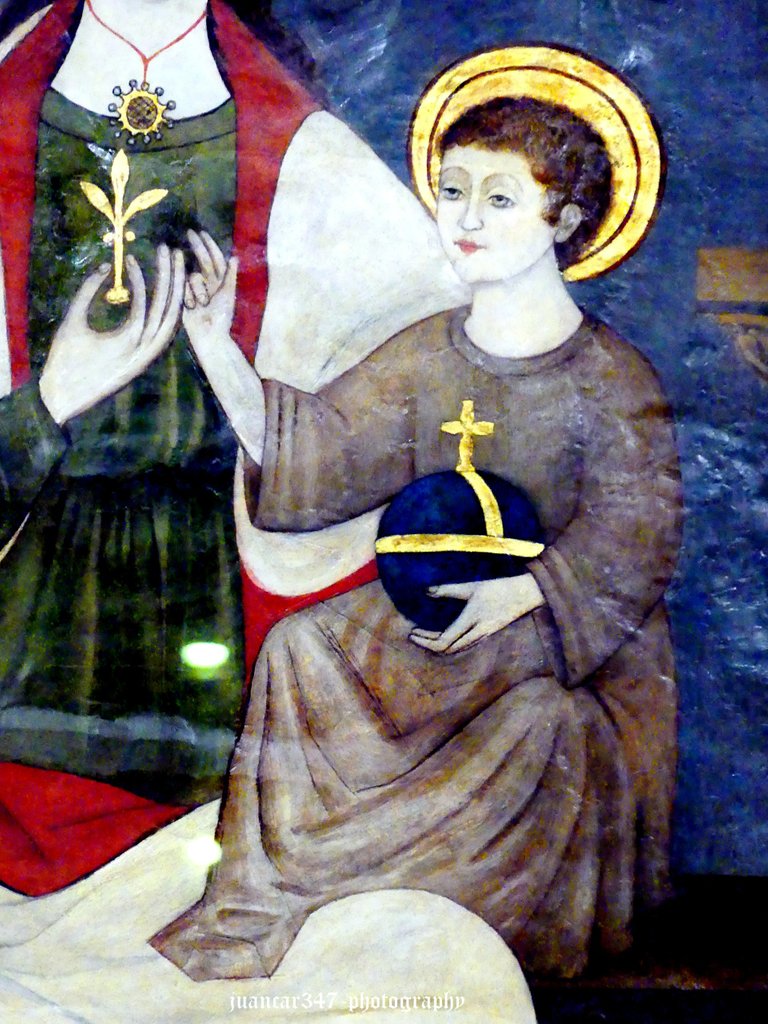Little-known wonders of Madrid: the Virgen de la Fleur of Lis

Although Madrid is not a capital that stands out, precisely, like many others, for the richness and abundance of that exciting architecture that distinguished one of the most intense periods in the history of Spain, such as the Romanesque, it still preserves, despite of everything, some related curiosities, not lacking, at all, of beauty and interest.

It has always been said, and rightly so, that Spain has been an eminently Marian country; which comes to mean, as incredible as such a statement may seem to all those who think that they are living the golden age of agnosticism, that the virginal figure of Mary always had a warm welcome in the heart and in the fidelity of the Spanish.

To such an extent that, if we had to make an inventory, as exhaustive as possible, of the veracity of this affirmation, we would see that it would be practically impossible for us, since there is no city, town or remote village, that in whose cathedral, in whose church or in the most humble of its hermitages, do not have an image of Mary and in many cases, with an extraordinary miracle-working tradition behind it.

Madrid, despite having lost most of that late Romanesque art, which characterized the reconversion of this city, from the reconquest, in the twelfth century, still preserves, precisely in the figure of the Virgin Mary, that indelible memory , in the figures, more or less fortunate -unfortunately, the original image of the Patron Saint of Madrid, the Virgen de la Almudena, was lost in a fire, although her remains were deposited inside the modern image that presides over the cathedral that bears her name - of three virgins in particular: the already mentioned Almudena, the Virgin of Atocha and the one that I have the pleasure of presenting to you, less known by the visiting public, in general, which responds to the name of Virgen de la Fleur of Lis.

Unlike the other two, which were made from a block of wood and had behind them the legend of their carving by Lucas himself, when not, by the son of thunder, Santiago Boanerges, the Virgin of Lis, responds to that plasticity, that, at the time, covered a good part of the apses of churches and hermitages of Romanesque origin, making them, comparatively and metaphorically, small but beautiful Sistine Chapels.

The canvas, because that is precisely what it is about, is also of Romanesque origin, dating from the 13th century and discovered, by chance, in the 19th century, when the walls of the old Romanesque church of Santa María began to be demolished, that at that time, stood in the place where it was determined that the current Almudena cathedral should be built: at the confluence of the Cuesta de San Vicente -which still retains part of its medieval wall and where the carving of the Virgin was discovered de la Almudena, just reconquered the city- with Mayor and Bailen streets.

In this beautiful painting, which goes unnoticed by many of those who visit the neo-Romanesque crypt of the cathedral, located a few meters from a moving Gothic carving of the Christ of the Good Path and which, according to certain circles, was ordered to be painted, on purpose, by King Alfonso VI, we have an excellent example of hieratic Romanesque expressiveness, showing a seated figure, Mary herself, holding the Child with her left arm and clearly showing one of the richest symbols of all those that always accompany to this type of representation: the fleur-de-lis or the lily.

On his part, the Child carries in his hands, a ball, divided into the traditional three sections, which represented the three known continents -to a greater or lesser extent- at that time: Europe, Africa and Asia.

A few years ago, the canvas was restored, so now its colors seem cleaner or sharper, a detail that, at the time, led to certain suspicious opinions, to think that perhaps there had been a change and that the original had been secretly hidden or sold to some rich collector.

None of this is demonstrable, of course, but it may be interesting to record it as an anecdote, in the same way, that it can be quite an experience, to contemplate this beautiful image in detail, letting oneself be captivated, not only by the beauty and the sublime transcendence that it surrounds, but by the beauty and silence of the crypt that has housed it for many years.

NOTICE: Both the text and the accompanying photographs are my exclusive intellectual property and therefore are subject to my Copyright.

Congratulations, your post has been added to Pinmapple! 🎉🥳🍍
Did you know you have your own profile map?
And every post has their own map too!
Want to have your post on the map too?
Thank-you very much
Thank you for sharing this amazing post on HIVE!
Your content got selected by our fellow curator @rezoanulvibes & you just received a little thank you via an upvote from our non-profit curation initiative!
You will be featured in one of our recurring curation compilations and on our pinterest boards! Both are aiming to offer you a stage to widen your audience within and outside of the DIY scene of hive.
Join the official DIYHub community on HIVE and show us more of your amazing work and feel free to connect with us and other DIYers via our discord server: https://discord.gg/mY5uCfQ !
If you want to support our goal to motivate other DIY/art/music/homesteading/... creators just delegate to us and earn 100% of your curation rewards!
Stay creative & hive on!
Thank-you very much
Great post as always! As for the globe in the hands of little Jesus, because it also exists in the iconography of the orthodox church (obviously you will think), I have read that there is a connection with the Platonic version of the soul! You know, there are many elements from Greek and only philosophy, which exist almost intrinsically in the Christian faith ! According to Plato, tripartite soul is a theory that analyzes three parts of the soul. The parts are the rational part, the spirited part, and the appetitive part!
Interesting comment. I have not wanted to delve into part of that heterodox symbolism that animates many of these images and although when I wrote it I did not think of Plato and his theory and regardless of the fact that numerous ancient forms of thought coincide in Christianity and its symbology (even the bulls and Babylonian winged lions, with which at first the symbols of the evangelists who accompanied the Pantocrator were represented in the paintings that decorated the apses of the churches), in this case, it would not always be applicable, because in many other representations, the ball, which is generally carried by the Mother, is represented either plain or divided into four parts, like the four elements of alchemy, to give just one of the many comparative examples that exist. I appreciate and appreciate your comment. Best regards
You are welcome Juan!
Congratulations @juancar347! You received the biggest smile and some love from TravelFeed! Keep up the amazing blog. 😍 Your post was also chosen as top pick of the day and is now featured on the TravelFeed.io front page.
Thanks for using TravelFeed!
@invisusmundi (TravelFeed team)
PS: Have you joined our Discord yet? This is where over 1000 members of the TravelFeed come together to chat. Join us!
Thank-you very much